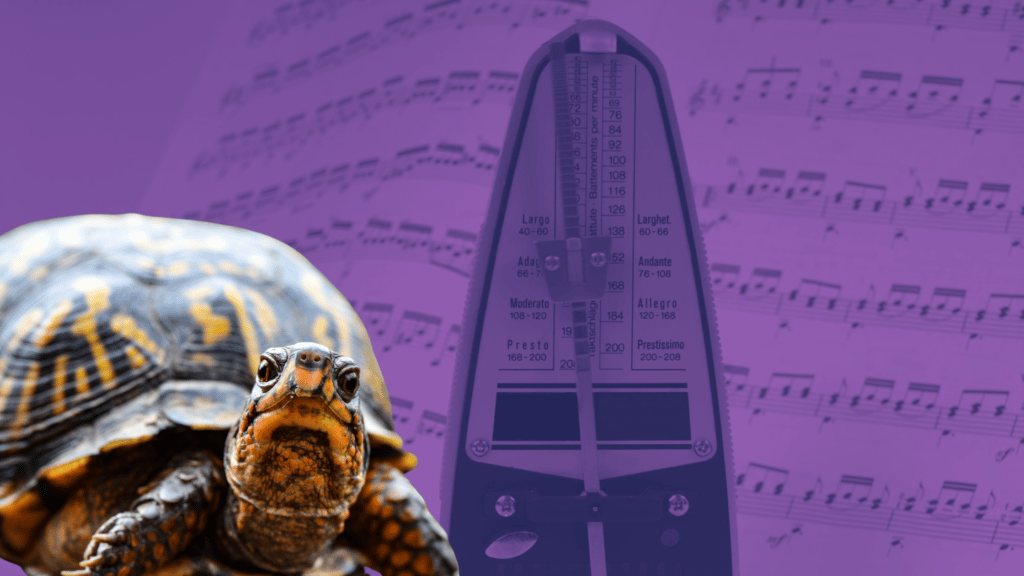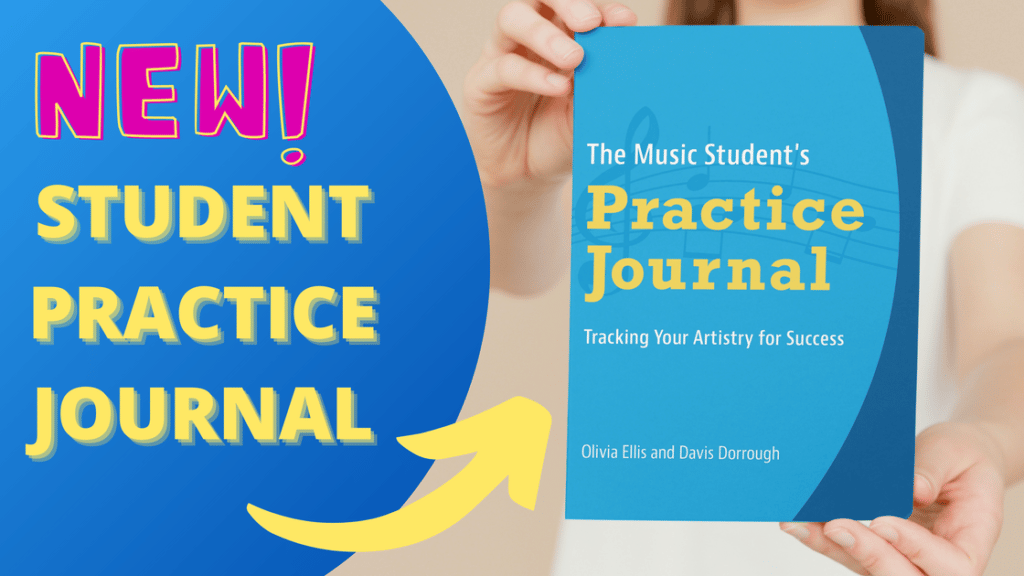The myth: Practice everything slowly.
The truth: Slow practice is extremely effective but can work even better if you intersperse practice at faster tempos.
I am a believer in the incredible power of slow practice. Working on passages of music under tempo allows me to absorb the music more clearly. I am constantly reminding both my students and myself that slow practice should be part of our daily routines, even as we get close to performance time. Here are some specific benefits of slow music practice:It opens an avenue to listen for important details
- It gives you a chance to discover new things about the music
- It helps you develop control and good balance
- It allows you to focus on muscle movements and playing with efficiency
- It can build healthy playing technique
- It strengthens your memory
- It makes it easier to check for accuracy
Slow practice is a healthy and essential habit. The question is, should you always practice under tempo, especially in the beginning stages of learning a piece? Perhaps not. Even though slow practice has its place, musicians shouldn’t simply play a piece slowly until they “get it” enough to move on to a faster tempo. Slow practice is beneficial when done with a purpose and when interspersed with practice at faster speeds, even in the early stages. Some skills simply cannot be practiced under tempo.
You may already be familiar with some of the correlations between music practice and the athletic world, particularly with regards to mental and physical preparation. Some of the same ideas of fast practice apply to many sports. I recently had the opportunity to have a conversation with a cheer coach about slow versus fast practice, and it was interesting to hear her perspective on training her team for stunting.

She said that exercises and body position can be worked on beforehand, but some skills work better modified rather than practicing slowly. For example, she explained that instead of doing an actual jump, the team practices “approach drills” where you isolate one part of the body. One of these is what she refers to as a bunny jump where, instead of doing a full jump with a toe touch, they simply jump straight into the air but only work on the upper body and arms.
She also commented that it is difficult to practice skills at a slow speed because the athletes must stop mid-connection, rather than letting the motion flow from one skill to another. In some cases, it may be more challenging because the athletes must hold longer and do not have the momentum of the faster pace.
Similarly, some piano skills simply cannot be practiced well at slow speeds. The following are examples of music skills that benefit from performance-tempo practice:
Working on gestures or groupings
When figuring out which notes naturally group together, playing up to tempo can be extremely useful. You can feel which notes work in a particular position, and you can often play many notes as part of a single gesture at faster tempos.
Getting the big picture
When working on the overall interpretation, it is helpful to play through up to tempo to get a sense of the piece. When playing through just to practice the mood, it is not important if you miss some notes. You can work those out another time. While I don’t do this often, it helps to understand the big picture of a piece.
Checking fingerings
Sometimes, a fingering feels great at a slow tempo, but once you play it faster, you realize it doesn’t work. Playing fingerings close to performance tempo is essential to make sure they will work as needed. I like to isolate a measure or two at a time, following through to a downbeat or the end of a phrase.
Listening to the direction of phrases
Passages with slow-moving melodic lines can be tricky to phrase, as the pianist needs to listen to the connection of the melody. Playing these passages slowly may make it difficult to shape the overall phrase, but playing up to tempo can help us listen better to the direction of the melody.
Practicing unique skills
Some skills should be practiced both slow and fast, to work on the technique of performing up to tempo. Glissandos, trills, ornaments, and leaps are just a few examples of pianistic skills that fall in this category.
When you are first learning a piece, it may not be possible to play passages up to tempo. In that case, you should break them down into manageable chunks. You can practice hands separately, working on one hand at a time. You can also practice very small sections, such as 2-4 beats. Finally, you can do what is known as “skeleton practice,” where you practice the main bones of the section but leave out other parts. In other words, you focus on the main elements only, such as playing the melody and bass notes on downbeats.
David Michael Wolff, both a pianist and Principal Conductor and Artistic Director of the Carolina Philharmonic, said the following on practicing:
“[…] I realized that fast practice and slow practice are two sides of the same coin; both are necessary to master your subject.”
David Michael Wolff, pianist and Principal Conductor and Artistic Director of the Carolina Philharmonic
Both slow and fast practice have unique benefits. Rather than practicing one tempo exclusively until you are capable of going faster, consider the fact that slow practice is helpful at most stages of learning and layering faster practice alongside it can achieve optimal results. Practicing both ways allows us to tap into even greater potential to master our music.
One great way to coach students on slow vs. fast practice strategies is to record them in a good practice journal. We love The Music Student’s Practice Journal, which offers plenty of space and prompts for tempo suggestions and goal setting.
Notes:
- (https://www.carolinaphil.org/zen-and-the-art-of-piano/slow-practice-fast-practice)

Dr. Olivia Ellis teaches piano, group piano, pedagogy, and chamber music at Messiah University in Mechanicsburg, Pennsylvania. She’s an editor for Piano Magazine and has published several books including the Easy Piano Lead Sheets and Chord Charts series. She’s constantly creating new activities and games to teach concepts, and loves helping other teachers find their niche.



